Professional Serbian translation services
We provide professional Serbian translation services. We translate Serbian to and from German, English, French, Chinese or any other language.
Serbian translation and the Serbian language hold a special place for us, as we have chosen for a number of reasons to base our headquarters in Belgrade in Serbia. This ancient city lies at the heart of the Balkan peninsula, and Belgrade’s social and commercial catchment area is vast. The town occupies a natural key point on a hill at the confluence of the Sava river with the mighty Danube, two navigable waterways that span the region from the Black Forest to the Black Sea, the bedrock of commerce for millennia. The fortress here has been disputed as far back as records exist, and just outside the city lies Vinča, the oldest known settlement in Europe dating back over 9,000 years.
Serbian translation services
We offer full Serbian language services including:
- Professional Serbian document translation
- Certified Serbian translation
- Revision, editing, proofreading of Serbian documents
- Serbian document conversion
- Serbian interpreting
- Video translation & transcription from and to Serbian
- Desktop publishing for Serbian
Our professional Serbian translation services are the most cost-effective you will find (read about our translation rates here).
The Serbian language – our translator’s viewpoint
We asked our chief Serbian editor to tell us something about the language he studied and has worked with as a Serbian translation professional for over 17 years. If language interests you, this will fascinate you.
He spoke about the problems he has as a translator and editor, about the origins of his language and it peculiarities.
What can you tell us about the Serbian language, its origins and development?
I could talk all day about it, but let’s try and divide it into some periods.
Before the written language
We can trace the Serbian language back to the Proto-Balto-Slavic language which emerged somewhere between the northern shores of the Black Sea and the Baltic between the third and the first millennium BC. The language divided, forming Proto-Baltic and Proto-Slavic. The Proto-Slavic language was spoken in the basin of the great rivers of the Vistula and the Dnieper, a territory that today belongs to Poland, Belarus and Ukraine.
The first major event important to all Slavs comes with their migration in the 5th and 6th centuries AD, when they spread from the north to the south of the Old Continent, and the number of speakers increases several times. Some dialects begin to be distinguished, from which centuries later languages will emerge, separate though mutually understandable.
The first writing
Another important turning point comes in 863 when Prince Ravislav of Moravia petitions the Byzantine emperor to send learned men to spread Christianity to the people. The emperor sends the monks Cyril and Methodius who, based on the speech of the Slavs from the vicinity of Thessaloniki, create the first Slavic alphabet – the Glagolitic script. There are thousands of kilometres from Thessaloniki to Moravia, but they manage to create an alphabet that all Slavs understood, even though it was based on a local dialect, which shows the similarity of the various forms of Slavic at the time.
This language was called Old Slavonic and very quickly got a second alphabet – Cyrillic. This was an ornamental script based on Greek patterns, first made by Cyril’s disciple Clement in Ohrid (now in N. Macedonia). It was named in honour of Clement’s teacher and quickly replaced the Glagolitic script among Serbs, who also produced a number of major Glagolitic works with features of the Serbian language, such as the Gospel of Mary, believed to have originated in the late tenth or early eleventh century. As for the first works in Old Slavonic with Serbian text in Cyrillic, it is worth mentioning the Temnić inscription, contemporary with the Gospel of Mary.
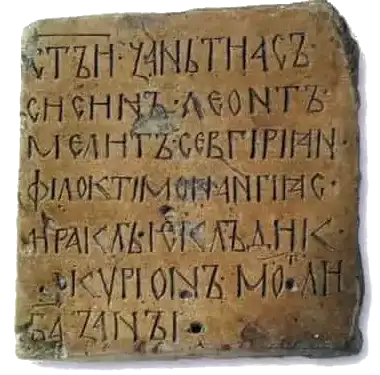
The Temnić plate
Around the same time, the Orthodox Church accepted Old Slavonic as the language for services in Slavic majority areas, thus creating a Church Slavonic that would not be changed to this day.
Serbo-Slavonic and Old Serbian
As the societies grew and developed, however, fragmentation took hold. In the Slavic states there was a rapid disintegration of the Old Slavonic language. Writers and transcribers wrote in Old Slavonic, but slowly introduced characteristics of the vernacular into their respective environments. This was also the case with the Serbs: in the territory that is now somewhere around the border of Serbia and Northern Macedonia, the first written monuments of Serbian culture were created in a new literary language we call Serbo-Slavonic, followed soon by those from Zeta, Primorje and Zahumlje (present-day Montenegro and Herzegovina).
All this time, besides the literary language we call Serbian, we also have the vernacular found in letters and legal documents, though rarely in literature, and we call this Old Serbian. Today the oldest preserved book in Serbian is the Miroslav Gospel written around 1185 and in the vernacular the Charter of Ban Kulin of 1189.
The next three centuries were marked by the first major language reform undertaken by Saint Sava, which simplified the alphabet, and by the development of literature and culture and the strengthening of the state.
The European development of the Serbian state and its language ceases in 1459 as it is engulfed by the Ottoman Empire and loses its independence. But Serbian statehood smouldered for some time in Montenegro, where something else important for the history of the language happened: in 1494, the first printing house in the Serbian medieval area began to operate in Cetinje. Under the auspices of the ruler Djurad Crnojevic, on 4 January 1494 Octoechos of the First Tone (Oktoih provglasnik) was published, the first book in the Serbian language and in Cyrillic script. With the fall of Montenegro under Turkish rule, the printing house ceased to operate in 1496.
While the state had to wait almost four centuries for reconstruction, the Serbian language was undergoing an interesting phase. It lost its state as a guarantor of existence, had no official use, and retired to churches where priests transcribed literary works. The Resava Monastery was best at this, though their heyday was just before the fall of the Turks, so they used a modern language. In a rather distorted sense, the name of the Resava school is still used as a metaphor for copying in class or cheating at an exam.

The Miroslav gospel

The Charter of Ban Kulin
Serbian language under the Turks
A large number of those living in occupied Turkish territory spoke Serbian, and many of them joined the various branches of government in the vast empire, fulfilling the requirement to convert to Islam. Some of them were highly influential, especially Sokollu Mehmed Pasha, a Grand Vizier under Suleiman the Magnificent in the 16th century. He is relevant to this story for the following reason: he succeeded in persuading the Sultan to allow him to use the Serbian language for official letters in military campaigns, so for some time Serbian became an official language of the empire. There is ample evidence of the use of Serbian in Turkish diplomacy: in 1562 it was used at a meeting of the delegate of the Porte with Ferdinand I Habsburg.
The most important work of the time was a handwritten phrasebook called “Arabic and Persian and Greek and Serbian”. This was a collection of phrases for use in everyday speech, two copies of which are preserved in the personal library of Sultan Mahmud I (ruled 1730-1754). The cover also contains a monogram of Bajazit II (1481-1512) and is believed to have originated long before the 18th century and was kept at court. Turkish scholars believe that it was written for Mehmed II the Conqueror and his sons in the second half of the 15th century, under this Sultan there are official documents in Serbian and Greek.
The earliest examples of the use of Serbian in language and diplomacy at the Turkish court date from the time of Bajazit I (1389-1402). The four-language phrasebook is written in Arabic script and if it is taken to be the 15th-century Serbian spoken language, it is the oldest example of Aljamiado literature – literature written in Slavonic languages in Arabic script. There is only one Turkish word in the Serbian text – the word for shop.
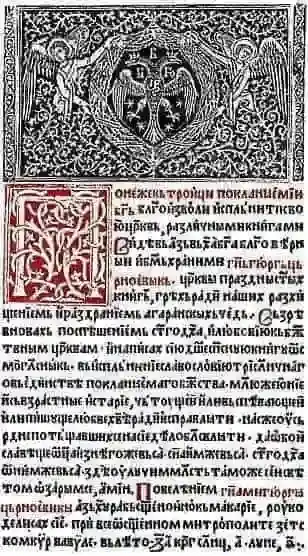
Octoechoes of the First Tone
Restoration of the Patriarchate of Peć and literacy under Austria
At the time of Sokollu Mehmed Pasha, we have an event that is generally considered the salvation of the nation: after more than half a century of occupation, Turkey allows the reconstruction of the Patriarchate of Peć and the Serbs have an institution again, and therefore a place that preserves and uses their language.
Centuries pass. Turkey becomes more conservative, Serbs have no high schools outside the church, and the church preserves their language and beliefs as it did at the time of the state’s inception. Many Turkish and oriental words seep into the vocabulary, and there is a sharp division between the language taught in church and the vernacular spoken outside.
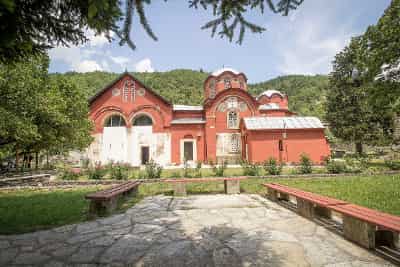
Those Serbs who in the turmoil find themselves in Austrian territory are influenced by the German and Hungarian languages, but they also have their literature outside the church, written in an improvised language that we could call Slavic-Serbian. This was a kind of mixture: those who could study read books in Serbian, and wrote in a mixture of Serbian, Church Slavonic and the vernacular, with an influence of Russian since the Russians sent Slavic books to counter Germanization and the conversion of Serbs to Catholicism. Slavic-Serbian had no standards, there were no spelling nor grammar rules, and literature did not reach far.
Vuk Karadžić
This is the situation before the emergence of the greatest reformer – Vuk Karadzic. He succeeded in carrying through the reform that cost his immediate predecessor Sava Mrkalj his life. A people divided into two enormous empires, a literary language without grammar, a national language with no state, some having access to schools, others not, and all spiritual matters the exclusive competence of the church – at the beginning of the 19th century, when the European civilization that had once included Serbia was already moving on in spiritual matters thanks to the Renaissance, Baroque and the Enlightenment…
Who was Vuk Karadzic? This peasant from Trsic near Loznica, near the Drina in present-day Serbia, transformed the linguistic situation not only of Serbs, but throughout the Western Balkans. When he arrived in Vienna after the collapse of the First Serbian Uprising in 1814, he knew only folk songs which, fortunately during this time of Romanticism, were becoming fashionable in Europe.
In VIenna he meets the imperial censor, the Slovenian Jernej Kopitar, who encourages him to make the first grammar of the Serbian language, written in the vernacular. Vuk does this the same year. Kopitar’s motives were certainly partly political, as many Southern Slavs of different religions living under Turkish rule spoke the same language. It was in Austria’s interest to encourage liberation movements among other things through a cultural resurgence beginning with linguistic unity.

Vuk’s Grammmar of the Serbian Language According to Common Speech, draws the attention of Serbians and the Austrian church alike to this lame youth who arrives from European Turkey and has the cheek to warn these sophisticated, erudite people sent by God to rule their nation, that their language was simply not Serbian. He also introduces new letters! The Serbian language is given the Cyrillic signs љ, њ, ћ, џ, ђ, ј. Interestingly, in an unheard of provocation for the establishment, the ‘j’ is taken from the Latin alphabet. There used to be a sign in Cyrillic similar to the Latin ‘i’, and the ‘џ’ (dž) was not used in Serbian words but only in borrowings. This is the first shot in a Serbian language and spelling war that will last for the next 32 years.
Vuk then published a Dictionary of the Serbian Language and Serbian Grammar (1818). His work was based on the language spoken by a majority of Serbian-speakers, who lived in areas he was familiar with. But then he travelled to places where ‘Serbs of the Three Faiths’ lived – Bosnia, Montenegro, Herzegovina. Seeing that in the speech of Muslims and Montenegrins the consonant ‘h’ was still as common as in the literature of old Dubrovnik, he began to write ‘h’ himself from 1836, though it had disappeared from use in majority areas. Since most ‘ijekavski’ speakers did not use the latest symbols (d+j=đ i t+j=ć) just like in Dubrovnik literature, Vuk drops them in1839 and begins to write djevojka in place of đevojka and tjerati instead of ćerati.
One of the most persistent claims of Vuk’s opponents was that in the language of the common people, no fine literature or scholarly discussion could be written. All this fell through in 1847, which is considered the year his ideas triumphed, because four books of great value were published:
- Pesme (Songs) by Branko Radičević
- Gorski vijenac, (Mountain Wreath) by Petar II Petrovića Njegoš
- Novi zavjet (New Vow) translated by Vuk
- Rat za srpski jezik i pravopis (The War for the Serbian Language and Spelling) by Đuro Daničić
Of these books, only Gorski vijenac was printed in the old alphabet.
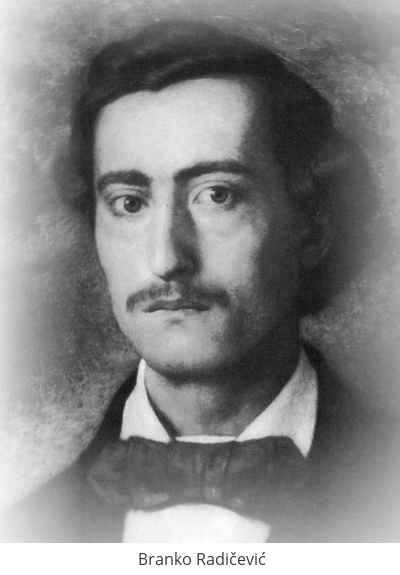
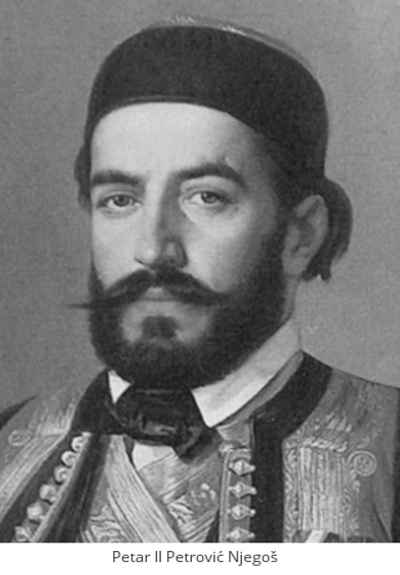
It turned out, then, that the vernacular was just fine for high quality poetry (Radičević) and even for a philosophical treatise (Njegoš). Vuk also showed with a New Testament translation that the vernacular could also represent the complexity of the thought and style of biblical figures, though he had to borrow words from the archaic language. Finally, Daničić’s linguistic treatment of the struggle for the new language and spelling showed that scientific studies could be written in the “language of pigs and cattle”.
All this work culminated in 1850 when the Vienna Literary Agreement was signed. The literary language was based on the Stokavian dialect of the ‘Yekavian’ pronunciation, which was spoken by the vast majority of Serbs at the time, and for this reason used by Vuk.
The second edition of the Serbian Dictionary was published in 1852 and unlike the first edition which had 26,000 words from rural life with short descriptions, this one had 47,000 words with their diacritical marks. As is usual in the Balkans, most accolades are posthumous: Vuk died in 1864; his spelling was officially recognized in the restored state of Serbia in 1868 and is the basis of literary language even today.
The Serbian language in Yugoslavia
The unification of the southern Slavs in 1918 gave new impetus to the language. The once despised language of the common people was now official from the Alps almost to Thessaloniki. This continued after the communists came to power in 1945, but new times also required a new agreement between Serbs and Croats. The Novi Sad literary agreement was reached in 1954 and confirmed the situation on the ground: one language, called Serbo-Croatian or Croatian-Serbian, with two equal variants and two equal spellings. One variant is the western one, with the same basis as in the Vienna Agreement 110 years earlier: the Stokavian dialect with Yekavian pronunciation. The second is eastern, based on the Stokavian dialect with Ekavian pronunciation. Cyrillic and Latin are equal alphabets, with Latin being dominant in the west and Cyrillic in the east.
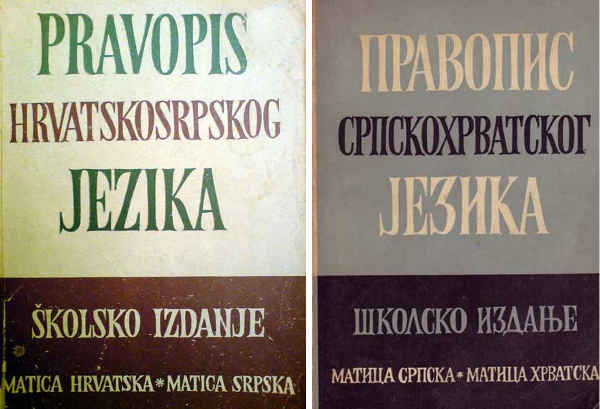
After the breakup of Yugoslavia, the eastern variant of Serbo-Croatian became officially Serbian, which recognizes both Yekavian and Ekavian pronunciations. Cyrillic is the official alphabet, enshrined in the constitution of 2006, though on rather vague terms that appear to allow alternatives. Cyrillic is used by the government, though communications to the government in Latinic script are usually accepted. Both alphabets are taught in schools, but if you look at billboards in Belgrade, the Latin script is pretty much universal except for public announcements: advertising professionals evidently seem to think that most people read that alphabet more easily.
Today, the Serbian language is in free development. It has its own norms, divided into strong (correct declension by case, nouns and verbs agreeing in gender and number) and weak (it is recommended to use commas in certain places, but it is not wrong to omit them). It is very open to influence, words from foreign languages are easily accepted and adopted through transcription and transliteration. Since the re-establishment of the state in the nineteenth century, most of these words have come from German, French, Hungarian and in the last half century almost exclusively from English. The official language is still based on Vuk’s language and orthography with the influences of time, such as the bureaucratization of language, which is a picture of present-day life dominated by administrative and office speech.
You can read a more detailed description of the history of Serbian literary language from the pen of Pavle Ivić, one of the leading Serbian linguists of the 20th century.
Who speaks this language, and where?
About 12 million people in Serbia, Montenegro, Northern Macedonia, Bosnia and Herzegovina, Croatia, Romania, Hungary, Albania, the Czech Republic and Slovakia call their language Serbian, and these are only the countries that have recognized it as official or a minority language. Due to emigration, Serbian can now be heard from California to Japan and from Norway to South Africa.
What is special about Serbian compared to other languages?
The foundations of the accent system laid by Đuro Daničić in the mid-19th century are still valid today. In Serbian, one-syllable words can have only descending accents. In multi-syllabic words, the first syllable can have any accent, but the inner syllable can only be ascending. In Serbian, the emphasis can never be on the last syllable. This should also be respected when transferring words from languages where it is allowed, such as French or Greek. In these cases, the accent is transferred to the previous syllable, and the last syllable is pronounced a little longer, just not accented. Such rules no longer have absolute coverage in the vernacular, the flood of compound words has led to the emergence of words with a descending internal accent, as a rule at the joints of compound words.
Although it is officially permitted to write foreign proper nouns (Paris, Johnny, Shakespeare) in their original form when using Latin script, a phonetic spelling is more usual. This adapts such words according to rules that make up a large part of the grammar book (Pariz, Džoni, Šekspir i Париз, Џони, Шекспир). This is because of the belief that adapted words are easier to absorb and to apply cases, which are the basis of the language system, to become part of the lexical fund and enter the culture. In layman’s terms, Šekspir is “ours” and Shakespeare is “alien”.
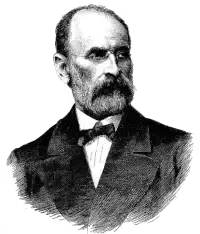
Djuro Daničić
Serbian is an active language, writing in passives should be avoided except in legal language or media headlines. The passive verb ‘trebati’ (to be needed) has only a limited range of tenses and when followed by a verb must be in impersonal form.
The Serbian language allows a double negation and considers it good style. It is correct to say, “I did not do nothing,” and this negation may even be fourfold “Nikad ničim nisam ništa izazvao!“ (I have never in no way not caused nothing!).
What challenges do you face when translating?
One of the more interesting challenges with professional Serbian translation concerns the adaptation of foreign personal names and toponyms from Latinic languages. The rules are clearly defined, but persistent discrepancies are found. This can best be seen when transcribing names and toponyms where the original vowel combinations are IA, IE, IO and IU (Maria, Diego, radio, Fehmiu) . Since in all these combinations except IO you can hear a ‘y’ sound between the two vowels, the rule tells us to write Marija, Dijego, Fehmiju, in Serbian, but ‘radio’ remains as it was. This is especially important if the translator has opted to transcribe the names, in that case there should be no discrepancies to the rule, but this does not mean that there are none, in fact there are many. Under the influence of the internet and English-language media, forms without j arrive in Serbian even when the names are transcribed: we see Gabriela Sabatini but Maradona Dijego while Forlan is often Diego.

Another problem with transcription is adaptation “by ear” where Vuk’s rule of “write as you speak” is commonly imposed on foreign languages. So, for example, the Italian forms ‘c’ or ‘cc’, which are pronounced somewhere between Serbian ć and č have in recent times exclusively become ć, despite a huge tradition of the opposite. That is why today we have Frančesko Petrarka, while sports journalists speak of Franćesko Toti, even though the Prince of Rome was Frančesko.
Problems can also arise in understanding the true meaning of foreign words, e.g. in a Serbian translation the English word ‘prehistoric’. This has a clear meaning, it refers to something that happened before history, that is, before the first writing. The most common Serbian translation, however, is ‘praistorijski’, which is wrong because the prefix ‘pra’ means ‘old’, so it would appear that the prehistoric refers to the time of ‘old history’, or after the first written documents. The correct translation would be preistorijski, the prefix ‘pre’ having the same meaning as in English, but today this is quite rare because the ‘wrong’ form has settled into everyday speech.
Since a Serbian text must obey the rule of agreement in gender, number and case, if the verb is feminine the noun must also be: only ‘Jelena Petrović je rekla‘ (Jelena Petrovic said) or ‘Petrovićeva je rekla‘ but never ‘Petrović je rekla‘.
Interesting facts about Serbian
Serbian got its first single-volume dictionary after Vuk Karadzic (in the middle of the 19th century), with 85,000 explained and accented words – only in 2007, published by Matica Srpska. In the meantime Serbians used and still use two others. One is the Dictionary of Serbo-Croatian Literary and Folk Languages of the Serbian Academy of Sciences and Arts, first published in 1959. This has now grown to twenty volumes though it is only half finished: at this rate it will take another half century to complete. So far it contains 230,000 words but the target is half a million. The second is a six-volume Dictionary of the Serbo-Croatian Language published by Matica Srpska in 1976 with 120,000 words. With all the online tools we have, we still use them in professional Serbian translation.
The word vampire is considered to be the most famous Serbianism in the world. There are also paprika, šljivovica and slava.
‘Čistota’ (purity, cleanliness) is a characteristic of the spirit while ‘čistoća’ refers to things.
Until modern times, the Serbian language determined that a woman’s surname depended on whether or not she was married. Before her marriage, Maja Marković was ‘Markovićka‘ and after marrying Dušan Jovanović she was ‘Jovanovićeva‘. Nowadays, this is not always followed and the ‘–eva’ form seems to prevail. However, in familiar address the ‘-ka’ form is still used though it does not necessarily indicate marital status.
Serbian has a well-developed vocabulary for family relations: the word ‘uncle’ in other languages can be stric, ujak ili teča in Serbian, depending on the exact relationship. The same is true of aunt – in Serbian it is tetka, ujna or strina. This is thought to have been preserved from the time of linguistic unity with the Baltic peoples, because only there do we find a similar arrangement.
The Serbian language has phonetic spelling (for the most part) and therefore a large number of changes in the sound of letters according to their position. They have their exceptions: for example, the aspirated consonant ‘d’ in front of an ‘s’ can fail to change into its silent pair t even though by the rules it should (predsednik, but pretpostavka). Since the adaptation of foreign names and toponyms is an integral part of the language, the question arises as to what to do with changes in foreign words in a professional Serbian translation.
In most cases, they still exist (Habzburška monarhija, not Habsburška, Diuzburg, not Duisburg), but more recently there is a breakthrough in words where there is no change, say Vašington. Many of the complexities that exist today have led to situations where we have contact between the sound and the unaspirated consonant at the point of merging two words and there is simply no change. The most famous examples are certainly Fejsbuk and Mobtel. This is a sign that speakers continue to clearly understand the meaning of each word within a compound word, but also, most importantly, strict adherence to phonetic spelling is simply not possible.
Serbia, a wonderful country to visit
Serbia is little known as a tourist destination, but its unspoilt nature makes it one of the most visitable countries in Europe.
The seemingly endless plains of Vojvodina in the north are a farmer’s paradise that can feed a much larger country. The mountainous regions in the south and west are among the best for trekking, and at Kopaonik you can find a world-class ski resort. Visit the many monasteries or sail on the meandering Danube as far as the Black sea, experiencing pristine wildlife resorts along the way; visit hot springs and caves; stay in an ethno village. Or enjoy the nightlife in Belgrade, home to hundreds of cafes and clubs, many of them on rafts moored along the rivers.
What few people know if they have not been to Serbia is that Serbians love foreigners They are open and hospitable and will go out of their way for a foreign guest in their country. Serbia is also a safe country with low criminality. An excellent place for a holiday.
See more: http://www.serbia.com/visit-serbia/

